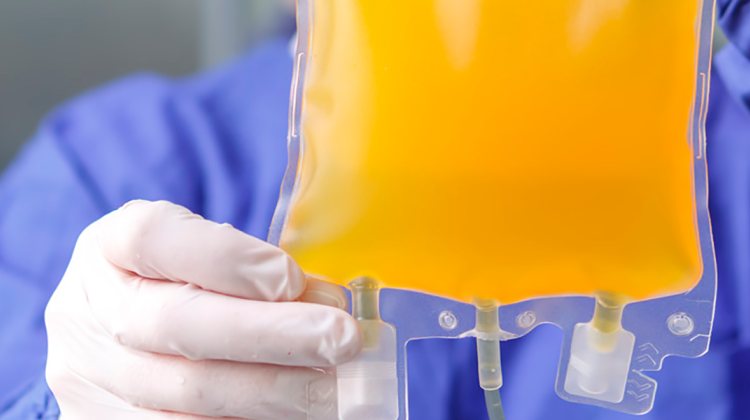Plasma-derived therapies (PDTs) are produced from the wide range of proteins present in donated human blood plasma. Much of the industry's recent and projected future growth can largely be attributed to one group of those proteins in particular: Immunoglobulin G or IgG. Historically, IgG has mainly been used for the treatment of primary immune deficiency; however, the list of IgG indications is steadily growing across multiple specialties outside of immunology, including neurology, hematology, oncology, and rheumatology.
While some may look to the revolutionary new science and developments in advanced therapies over recent years, this will likely only have a minor impact on the need for PDTs in the foreseeable future. Most notably, there are several gene therapy alternatives to PDTs for hemophilia currently in development, but hemophilia accounts for only a small percentage of the patient population that relies on PDTs. Furthermore, hemophilia currently has approved recombinant-based therapies as an alternative to PDTs, and yet, there is still a market and need for PDTs to serve a portion of the population with hemophilia. The indications treated with PDTs with the greatest medical demand still do not have feasible alternatives on the horizon.
Up until 2019, plasma collection volumes were steadily growing year after year. Even in the years leading up to the pandemic, the industry was unable to keep up with patient demand for products with the greatest medical need. The deficit between supply and demand was exacerbated by the pandemic. The COVID-19 pandemic resulted in an approximately 20% reduction in plasma donation volumes in 2020 compared against record donations in 2019. PDT manufacturers, government agencies, patient advocacy groups, and many others began ramping up campaigns to bring awareness to this issue and encourage citizens to donate plasma. Thankfully, the three largest PDT manufacturers (CSL, Grifols, and Takeda) have all recently announced substantial plasma donation increases in 2022, with overall collection volumes returning to pre-pandemic levels. While this is promising news for PDT patients, the manufacturing process from plasma donation to patient administration can take anywhere from 7 to 12 months, and supply shortages may persist for some time.
With the recent plasma donation shortage potentially behind us, what does the future of the PDT industry look like?
The plasma shortage brought into focus the fragile nature of the PDT supply chain. Most countries manufacturing PDTs rely on plasma, plasma fractions, and plasma drug product imported from the US. For European nations, in particular, there has always been a desire for better self-sufficiency and less reliance on the US. That desire was amplified by the recent plasma shortage. Some countries have started taking bigger steps towards that goal by opening new donation centers, enhancing donor incentives and patient advocacy programs, and most importantly, reviewing and revising legislation that governs the collection and usage of donor plasma. A greater push for self-sufficiency in countries outside of the US is something we are certain to see in the coming years.
When the pandemic began, PDT manufacturers were scrambling to produce hyperimmune globulin (H-Ig) produced from plasma containing high titers of COVID-19 antibodies from donors who recovered from the disease. H-Ig for COVID-19 did not have the clinical success that many had hoped, but that does not rule out the possibility of H-Ig being a first line of defense against other infectious diseases in future pandemics. Through this process, PDT manufacturers scrutinized their production networks and identified changes needed for better preparation for future pandemics.
In an industry reliant on a donor-supplied starting material, manufacturing efficiency and yield have always been paramount to the success of the PDT business. But, some of the practices in PDT manufacturing have remained unchanged for decades. In the wake of a donor-material supply shortage, we'll likely see a stronger push for novel methods and technologies in support of efficiency and resiliency. For many PDT manufacturers, the manufacturing process is a highly manual process requiring human intervention for transfer panels, centrifuge operations, filter press operations, and process vessel additions. A process ripe with opportunities for improvement. Transfer panels may be replaced with automated valving. New automated centrifuge, filter press, and closed vessel addition technologies may also be implemented.
However, the greatest paradigm shift in PDT manufacturing may come from completely new approaches to plasma protein separation. The traditional ethanol fractionation process, which has been in use since the 1940s, uses large quantities of flammable liquids. The unique hazardous material building code requirements add complexity and cost to design and construction. Alternative separation methods have been studied for many years but have generally always been limited to laboratory scale. It's possible that we could see more manufacturers pushing to bring those novel methods to a large-scale setting.
The last trend on this list was not ushered in by the pandemic but by public interest and corporate responsibility. Like many of the other major players in the biopharmaceutical industry, the PDT industry is starting to put a much greater emphasis on corporate climate action through energy and sustainability goals. Several manufacturers have already announced ambitious near-term and long-term goals related to renewable energy, reduced carbon emissions, natural refrigerants, water, waste, and employee wellness. And in many cases, their focus on sustainability does not stop at their facility walls, it extends to the environmental impact of their supply chain as well.
iSpeak Blog posts provide an opportunity for the dissemination of ideas and opinions on topics impacting the pharmaceutical industry. Ideas and opinions expressed in iSpeak Blog posts are those of the author(s) and publication thereof does not imply endorsement by ISPE.






